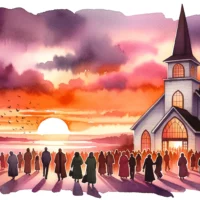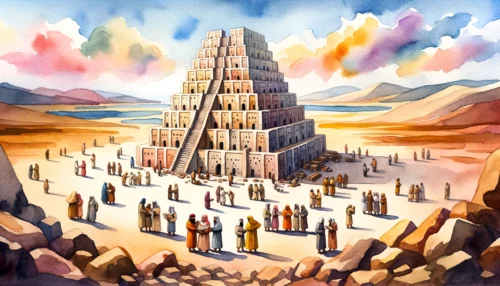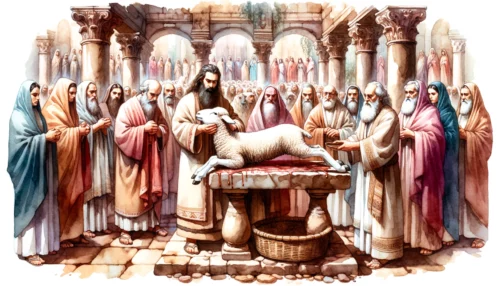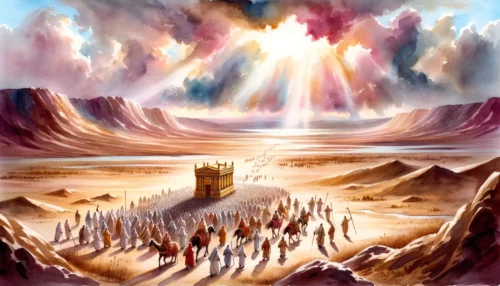In our journey through the Bible, we often encounter passages that challenge our modern sensibilities and provoke intense discussion. One such passage is Deuteronomy 22:28-29, which has been frequently cited as evidence that the Old Testament requires a woman to marry her rapist. However, a closer inspection of the text, its context, and the overall biblical narrative reveal a more nuanced picture. Understanding this passage demands a keen eye for historical context, a careful interpretation of the original language, and a compassionate recognition of God’s heart for justice and love.
Historical and Cultural Context of Deuteronomy 22:28-29
It’s essential to understand the historical and cultural context of the Old Testament, especially when it comes to passages that may seem perplexing from a modern perspective. Deuteronomy 22:28-29 is one such passage, which is found in the Pentateuch, the first five books of the Bible. These books, which were written thousands of years ago, reflect the societal norms, laws, and customs of ancient Near Eastern cultures.
The book of Deuteronomy is essentially a series of speeches given by Moses to the Israelites before they entered the Promised Land. These speeches included various laws intended to govern their society. Deuteronomy 22:28-29 is part of a larger section dealing with sexual misconduct, illustrating the high value placed on sexual purity within that society (Deuteronomy 22:13-30).
The passage in question is often interpreted as a law that forces a woman to marry her rapist. However, when viewed through the lens of ancient culture, it becomes apparent that the focus of this law was not on punishing the woman, but rather on holding the man accountable for his actions. In ancient times, if a woman was not a virgin, her chances of getting married were significantly diminished. This law ensured that the man responsible for her loss of virginity provided for her financially, as the ‘bride price’ was essentially an economic safeguard for the woman (Exodus 22:16-17).
It’s important to clarify that this doesn’t mean the woman was forced into marriage. The law states that the man “may not divorce her all his days” (Deuteronomy 22:29). However, there’s no explicit statement that the woman had to marry the man. Also, other biblical laws indicate that a woman’s consent in marriage was considered important (Judges 14:1-2).
In the context of ancient Near Eastern culture, the law in Deuteronomy 22:28-29 can be seen as a protective measure for women, who were often economically vulnerable. It intended to hold men accountable and ensure women were provided for. While the concept may be difficult for us to grasp today, it’s crucial to remember that this law was framed within a vastly different historical and cultural setting.
The historical and cultural context greatly influences our understanding of Deuteronomy 22:28-29. The intent of the law was to protect the rights and welfare of women in a patriarchal society, focusing on the responsibility of the man in question. It wasn’t a command for a woman to marry her rapist, but rather a law designed to ensure her security and survival in the societal structure of that era. This understanding invites us to take a more nuanced view of the text and its implications.
A Close Reading: Translations and Interpretations
When interpreting biblical texts, it’s crucial to pay attention to the original languages. The Old Testament was primarily written in Hebrew, a language that, like all languages, has its own nuances and complexities. This is particularly true when examining Deuteronomy 22:28-29, a passage that’s often misunderstood due to translation and interpretation challenges.
The verses describe a situation where a man seizes a woman who is not betrothed, lies with her, and they are discovered. In many English translations, the term “seize” is often interpreted as implying rape. However, the original Hebrew term used here is “taphas”, which can mean “to handle, seize, take hold of.” It doesn’t necessarily imply a violent act or rape (Genesis 39:12).
The term “lie with her” can imply sexual intercourse but doesn’t necessarily mean it was non-consensual. It’s used in other biblical contexts to refer to both consensual (Genesis 19:32-35) and non-consensual (2 Samuel 13:14) sexual acts.
The phrase “they are discovered” is interesting. In the original language, “they” is in the plural form, suggesting mutual culpability. This could indicate a consensual act rather than an act of violence, as the term “discovered” is often used in the context of uncovering a secret or hidden action (Joshua 7:15).
Interpreting ancient texts is not an easy task and requires careful attention to the original languages and contexts. These linguistic nuances suggest that Deuteronomy 22:28-29 might not be referring to a rape scenario, but rather a consensual act that occurred outside of marriage, which was a serious violation of societal norms and expectations at the time.
When we closely read and interpret Deuteronomy 22:28-29 with attention to the original language, we find that it might not depict a situation of sexual assault. Instead, it could be referring to a consensual act outside of the marriage covenant. This interpretation aligns with the broader biblical narrative, which consistently promotes respect, dignity, and care for all individuals, including women. With this understanding, we can see that the Bible, even in its most challenging passages, upholds principles of justice, fairness, and protection for the vulnerable.
God’s Heart for Justice and Love: A Broader Biblical Perspective
Let’s step back and consider the wider biblical narrative. When it comes to interpreting any specific passage, it’s crucial not to lose sight of the larger story. In essence, the Bible reveals a God who is passionate about justice, love, and care for the vulnerable.
Throughout the Old and New Testaments, God’s care for the victims of injustice is clearly portrayed. There are numerous laws in the Old Testament designed to protect the rights of widows, orphans, foreigners, and the poor (Exodus 22:22-24). This protective nature extends to women as well, as can be seen in the stories of Tamar, Ruth, and Esther.
The book of Genesis asserts the inherent worth and equality of men and women, stating that both were created in the image of God (Genesis 1:27). This foundational belief underscores the rest of the biblical narrative, affirming the value and dignity of all human beings.
When it comes to sexual violence, the Bible’s stance is unambiguous. In the same chapter of Deuteronomy, a few verses before the passage in question, the law explicitly condemns rape, prescribing severe consequences for the perpetrator (Deuteronomy 22:25-27). This law clearly distinguishes between consensual sex and rape, demonstrating God’s intolerance of such violence.
In the New Testament, Jesus continues this theme of love, respect, and dignity for all individuals. He regularly interacts with women in ways that were revolutionary for His time, affirming their value and worth (Luke 8:1-3). Jesus’ teachings emphasize the importance of loving one’s neighbor and caring for the least in society (Matthew 22:39; Matthew 25:40).
When we look at Deuteronomy 22:28-29 in light of this broader biblical perspective, it becomes clear that it doesn’t reflect an endorsement of sexual violence or a disregard for women’s rights. Rather, it’s part of a larger legal code aiming to provide security and protection for women in a specific historical and cultural context.
Taking a broader biblical perspective, we see that Deuteronomy 22:28-29 is part of a narrative that consistently upholds justice, respect, and care for the vulnerable. The text doesn’t command a woman to marry her rapist. Instead, it outlines a law intended to protect women’s rights in a context where their social and economic security could be easily compromised. This understanding aligns with the biblical portrayal of God as one who deeply values justice, love, and dignity for all.
Reflecting on the Journey
Navigating challenging biblical passages often requires us to step outside our modern context and enter the world of ancient cultures. It’s a journey that demands humility, openness, and a willingness to grapple with complex questions. In our examination of Deuteronomy 22:28-29, we’ve discovered that this text doesn’t command a woman to marry her rapist, but rather seeks to protect women’s rights and welfare within a specific historical and cultural framework.
Here are three questions to ponder as you reflect on this topic:
- How does understanding the historical and cultural context influence your interpretation of difficult biblical passages?
- In what ways can we continue to honor the intent of these ancient laws, which sought to protect and provide for vulnerable individuals, in our modern context?
- How can we ensure our reading of Scripture always reflects God’s heart for justice, love, and dignity for all?
As we continue our journey through the Bible, let’s take heart in the knowledge that we’re exploring a narrative of profound love, justice, and care for humanity. The God we see in these pages is not one who dismisses the pain and suffering of His people. Instead, He is deeply committed to their welfare and goes to great lengths to ensure their protection. Let this truth inspire us to approach every part of Scripture with openness, compassion, and a desire for truth.














